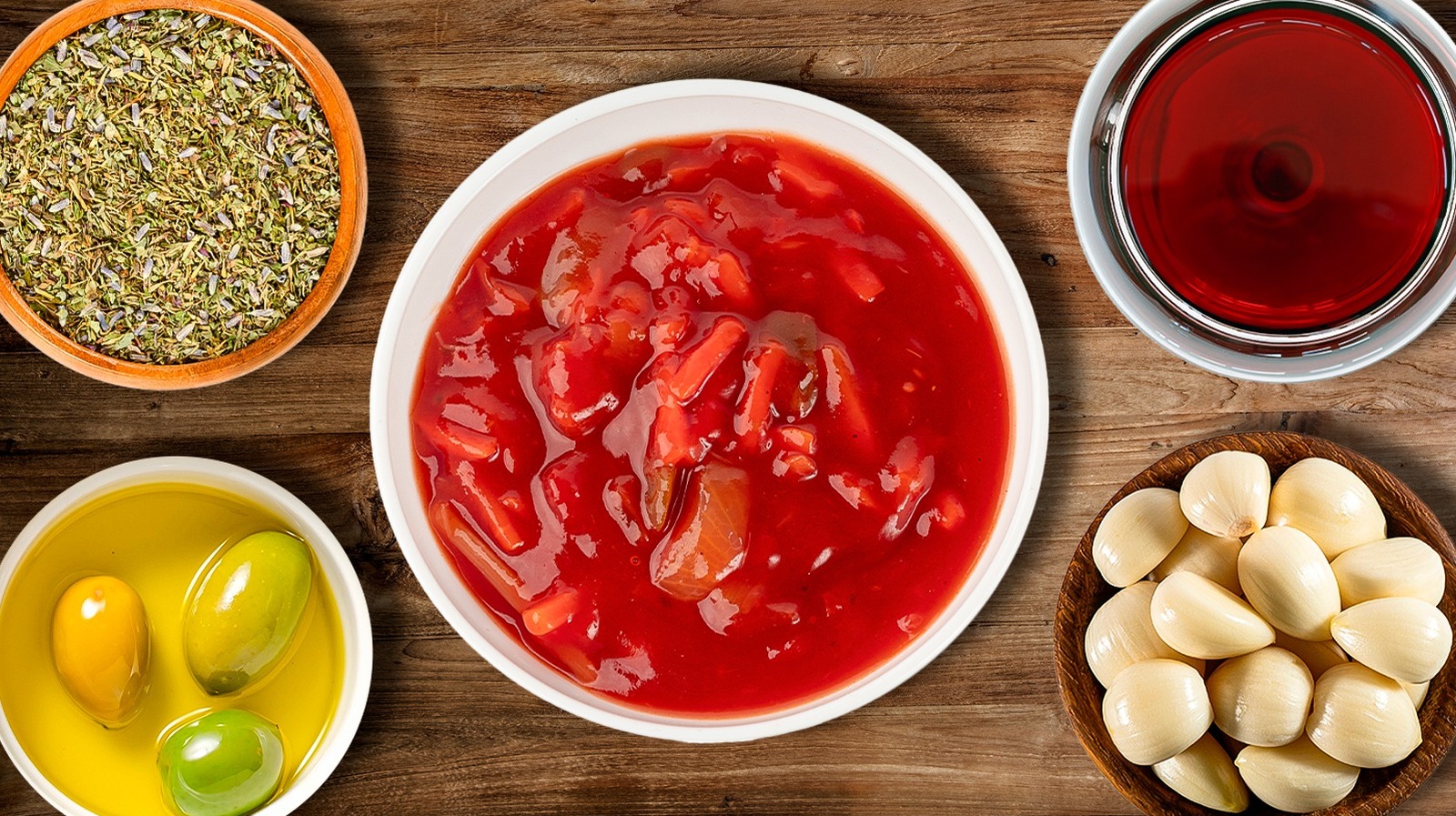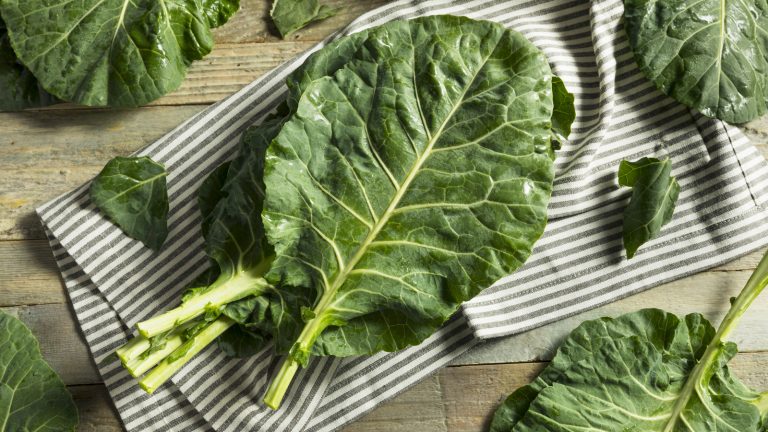For many people, cooking dinner at the end of a long day can feel like an exhausting task. It takes time and energy to create a tasty and filling meal. Luckily, there’s always pasta with marinara sauce to get us eating something satisfying in no time, without breaking our backs (or the bank).
As a culinary-trained professional, I don’t always want to make an elaborate meal after a long day in the kitchen. But, I find that pasta with marinara sauce is accessible enough that I don’t mind whipping it up during the week, and it often prevents me from reaching for a food delivery app to satisfy my hunger. It’s fairly quick and doesn’t require a whole bunch of food prep, while still feeling like a comforting home-cooked meal.
The marinara sauce can be the tricky part, though; while it’s simple to make, it can be bland for whatever reason. Perhaps you’ve used underripe tomatoes or canned tomatoes that aren’t the best quality, or maybe you haven’t cooked them for long enough. It could also be that you’ve used a jarred marinara sauce (no shame there!) and it’s lacking in flavor. Thankfully, there are easy tricks to inject more flavor into it and get it tasting great, without needing to use complicated techniques — whether it’s homemade or store-bought. Here are a few clever ways to fix bland marinara sauce.
Check the salt level
The act of making your daily meals is often more than just the process of cooking. For me, it also takes a lot of brain power to decide what to cook, and I know many people feel the same. You’re constantly calculating what you can make with what you have, or whether to pop to the grocery store to get the right ingredients. This is usually why marinara sauce is my go-to, as I likely have what I need to make it — and it doesn’t take too much thinking.
It can be disappointing if my marinara sauce ends up tasting flat, but in my experience, the reason can be something as simple as underseasoning. Enough salt can be crucial to a delicious pasta, and it’s also the easiest thing to forget to add enough of, especially if your mind is on a whole bunch of other ingredients.
My advice is to taste your sauce throughout cooking, and add salt both at the beginning of cooking and after your sauce has simmered. You’ll know if you’ve got the right level of saltiness at the end, once everything has come together.
Add an acid
It wouldn’t be illogical to think that a marinara sauce doesn’t need an acid, especially since tomatoes are pretty acidic anyway. However, you’ll be surprised what a couple of drops of lemon juice or vinegar can do to lift the whole dish and brighten up the flavor. If you’ve checked the salt level and the marinara is still bland, give acid a try. I find that it helps highlight the savoriness, and this is a rule I use for most sauces.
For marinara, choose a type of acid that goes well with the flavors. Red wine vinegar is a great option, or balsamic vinegar for a similar effect, with a hint of sweetness too. Remember to start with just a little, as acidic ingredients can be potent and overpower the dish if you add too much. Incorporate a splash, taste, and add more if needed.
Use tomato concentrate/paste
Tomatoes are glorious when their presence is strongly felt, and they get even better when a sauce has an impactful level of tomato taste. So if you taste your marinara sauce and find it underwhelming, perhaps it needs an injection of tomatoes. One easy way to do this is to add a couple of spoons of tomato concentrate or paste. Tomato paste offers pure, concentrated tomato flavor and will liven up store-bought marinara, jarred, or even homemade.
You can add as much or as little as you prefer; simply mix it into your marinara and let it simmer together. If you want to take it to the next level, sauté your tomato paste before incorporating it into the sauce. This does wonders in bringing out its flavor even more, and can help achieve caramelization to make everything taste more full-bodied.
Incorporate pasta water
Unless you’ve been living under a rock, you should know by now that pasta water is one of the foods you need to stop throwing out. Especially if you’re into food, it’s become fairly common knowledge that the water you cook your pasta in is more than just a by-product. It’s even been referred to as “liquid gold” and for good reason. Pasta water can make your sauces better by adding a salty, starchy liquid that helps bind the sauce better and makes it feel creamier. It can be used in so many ways, from cacio e pepe to cocktails. It’s no different when it comes to fixing a boring marinara sauce.
If you’re making pasta with your marinara sauce, make sure to reserve a couple of tablespoons of the pasta water. Simply spoon the liquid into your marinara sauce, mix it in thoroughly, and leave it to simmer for a while. It will combine into your sauce and give it extra body and flavor.
Use dried herbs and spices
There’s a lot of debate about what makes an authentic marinara, and purists will fight you tooth and nail if you tweak the recipe in any way. I’m here to tell you that in your kitchen, you get to decide, and if it tastes good to you, that’s all that matters. In my opinion, using certain dried herbs and spices can really do wonders in a bland marinara.
I like to use dried oregano, and even a sprinkle of thyme. I also enjoy adding spices like paprika, cayenne pepper, or even ground cumin. My sauce, my rules! Sure, it may not be the most authentic marinara sauce, but it’s your meal at the end of the day.
You can also liven up your marinara sauce with various fresh herbs; this is especially true for store-bought sauce. You don’t have to be limited to only basil, although the herb is a great choice, too. Fresh parsley, thyme, or even cilantro work great.
Use high quality olive oil
One underrated ingredient to enhance your sauce is olive oil. If you eat pasta in Italy or elsewhere across the Mediterranean, olive oil is used generously in pasta sauce. It adds a subtle, unique flavor that improves the taste of most dishes. With marinara, blandness can be a result of various things, but you should always try a drizzle of olive oil and taste it to see the difference for yourself. It offers richness and a light fruitiness that complements the tomato flavor beautifully.
For the best taste, use a good quality, extra-virgin olive oil. Not all olive oil is made equally, and if you’re using it for flavor purposes, its quality will make a difference. If you don’t know how to differentiate which ones are better, there are certain things to look out for in your extra-virgin olive oil, including checking the labels and choosing a darker glass bottle.
Let your sauce rest
A flavorless marinara can benefit from added ingredients, but there is a lot of benefit to letting your marinara sauce rest before eating it. Sure, it’s not a steak or a piece of duck breast, but “resting” has a different purpose in this case. The flavors will marry into each other, become even more cohesive, and develop a deeper flavor — you won’t run the risk of blandness.
This tip is a bit more difficult when you’re cooking hungry, and perhaps it’s best to do it when you’re meal prepping for the week, or perhaps just cooking in advance for the next day. It will be hard to resist digging into your meal just after cooking, but a little patience is worth it. You could let it stand for a couple of hours or leave it overnight in the fridge and eat it the following day. You’ll be amazed at the difference.
Sprinkle some MSG
Salt can do wonders for improving a bland marinara, but to give the overall flavor a major boost, there’s another ingredient that can come in handy: MSG (monosodium glutamate). If you’re “clutching your pearls” at the mention of MSG, it’s time to put the biggest misconception about MSG to rest. While people have unfairly linked certain ailments to MSG, there’s little evidence to support these claims. It’s used extensively in various parts of the world and is an easy way to enhance the umami in your cooking. Once you try it, you’re likely never going to look back.
If you’re nervous about using MSG for the first time, don’t be. There’s nothing to it, other than sprinkling it into your sauce. Start with half a teaspoon and taste. If you’re not sure where to buy it from, you can usually find it in larger grocery store chains in the international foods aisle, in most Asian grocery stores, or online. If you don’t know which brand to buy, Ajinomoto MSG is a classic.
Don’t be shy of garlic
Another point of discussion when it comes to marinara sauce is whether garlic belongs in it or not. Regardless of where you stand on this, garlic is a great way to remedy tasteless sauce. If you’re skeptical, you’ll find that garlic adds heaps of flavor and will make the marinara so moreish that you’ll go back for seconds.
Now the thing is, the best time to add garlic is when you’re starting to make your sauce. However, if you’ve got an already-cooked sauce, there are still ways to include garlic. Firstly, you can opt for garlic powder. It’s not a seasoning that needs to be cooked, and it will add enough garlic flavor to make an impact. Secondly, you can use fresh garlic, and frankly, nothing beats the fresh stuff.
The problem is that adding fresh garlic to your cooked sauce is likely going to be a little too pungent. In my experience, don’t add raw garlic straight into the sauce. Instead, sauté it first. I give my fresh, sliced, or chopped garlic a short stint in a warm pan with some olive oil to get it cooked through before adding it to the marinara. Mix it into your sauce and warm it all together to make it seem like you’ve cooked it with garlic for ages.
Add a little red wine
One of my favorite ways to fix a bland marinara sauce is to add a splash of red wine. And, I’m not alone, as it’s also Ina Garten’s secret to her best marinara sauce. I mean, it’s not easy to argue if it’s got Ina’s stamp of approval. Red wine can add more complexity to a number of sauces, but in my experience, it works well in marinara because it enhances the fruitiness of the tomatoes.
It also works as an acid, which will instantly lift the sauce, as I’ve previously mentioned. If you let the sauce simmer for a bit after you’ve mixed in some red wine, the alcohol will cook off nicely, and the sauce will develop a depth of flavor.
Take note that if the red wine doesn’t taste good when you drink it on its own, it’s not going to taste good in your sauce either. Many people will buy cheap or poor-quality red wine for cooking, thinking that it doesn’t matter. Just like with olive oil, you want to use a good quality red wine, and more importantly, one you like drinking. Then it will taste just as good in your cooking as it does in your glass.
Introduce more umami
Sometimes, your marinara might have enough salt and enough acid, but still be lacking in the flavor department. If that’s the case, I like to introduce more umami-focused ingredients. This may sound strange at first, but one of the ways I like to cram some umami into my marinara is by adding soy sauce. It’s not enough to make the sauce taste like soy sauce, but just enough that there’s an increased savoriness and complexity. It’s one of my secrets, and I do this with other sauces like ragu or bolognese. Miso paste works the same way. But if the thought of mixing soy sauce into a marinara freaks you out, other umami ingredients would work just as well.
Cheese is a known umami bomb, so grating it into your sauce will work perfectly. Of course, parmesan is a great option. But if you like, you can also add pecorino for extra saltiness, or even goat cheese to make your sauce a little creamy too — which I’m not complaining about. Another way to add umami is by throwing in minced anchovy fillets. They’ll dissolve into the sauce and give everything a salty and savory hit.
Cook the sauce down
A very simple trick for fixing a bland marinara is to simply let the sauce cook longer. This is one way to boost its flavor, without any extra ingredients. Cooking your sauce for longer helps it to reduce down more, letting excess water in it evaporate and making it a more concentrated version of itself. This does require a little patience, especially if you’ve chosen to make marinara because it’s quicker than other sauces. But if your sauce is bland, then you can still turn it into something to be desired if you leave it on the stove for an extra 15 to 20 minutes.
This is also a handy trick for store-bought marinara. If you find the taste a little lackluster, put it in a little saucepan on medium heat, and let it simmer for a while. The flavor should intensify and become more full-bodied.





